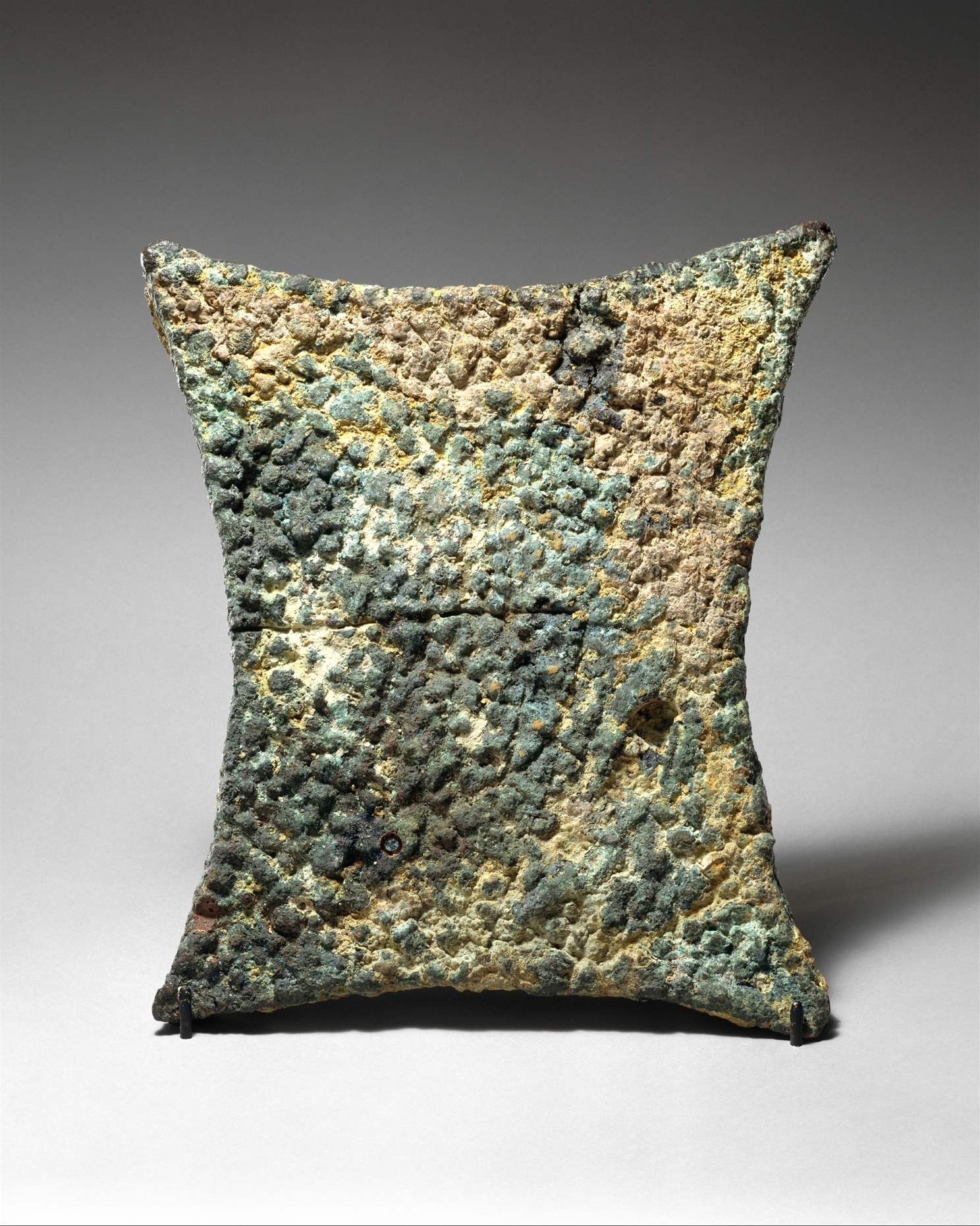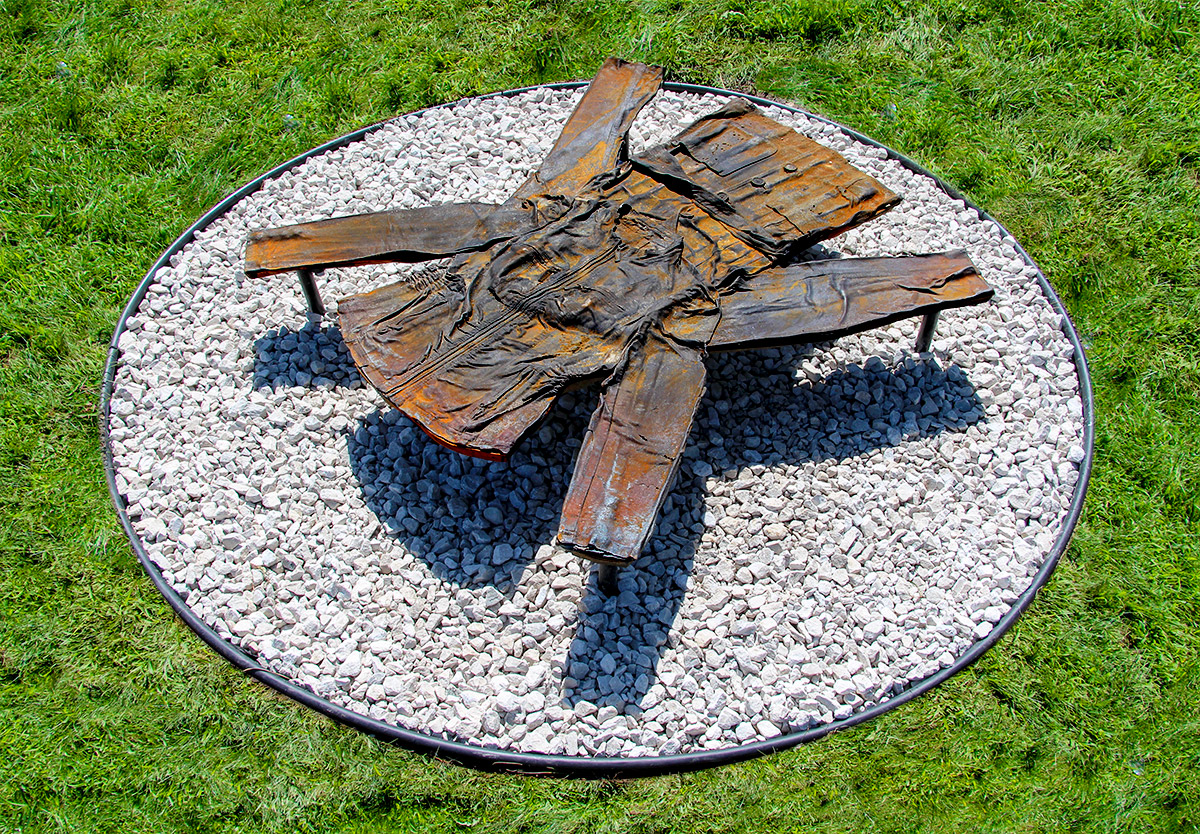Ingot
Cast iron
1' x 3' x 3'
2019
Bronze Age ingots adopted a variety of forms, like the plano-convex “bun” or the rectangular “rippenbarre.” In my opinion, the most evocative of these shapes is the “oxhide”, which was crafted to look like a stretched animal skin.

There is some debate over how the oxhide form came into popularity. It could be that such ingots were easier to strap to pack animals for transport, owing to limb-like projections from the central mass. I subscribe to an alternative idea that, in the early days of metallurgy, unworked metal did not signal value like it does today. Animal skins, however, were a familiar commodity that would be legible to people of the era.
Oxhide ingots first appeared in the Mediterranean around 1600BC, long before currency as we know it was invented. Though they were still being traded through barter, one can see how the ingot precedes fiat money, in that it represents potential value rather than direct utility (unless you yourself are a metalworker). Indeed, the oxhide form itself came to be highly abstracted, adopting a geometric “bow-tie” shape that belied its organic origin.
Though it may seem quaint to imagine a historical context where money is too abstract to hold value, one need only look to Bitcoin for the modern version of this failure of imagination. Indeed, cryptocurrencies are just like any other currency, or even art itself; once the community agrees that a limited resource has value, it instantly attains it.
Ingot presents itself as both sculpture and currency. Cast from secondhand jackets, the piece recalls the oxhide form with both literal and figurative references to skins. The shift from animal to human bodies speaks to a cultural and environmental moment where the consumption of resources, and the relentless pursuit of capital, has put all of our lives at risk.
This piece was produced when I was in residence at the Franconia Sculpture Park Hot Metal Artists program. It was displayed there for a few years, and now resides under my deck in Chicago.

